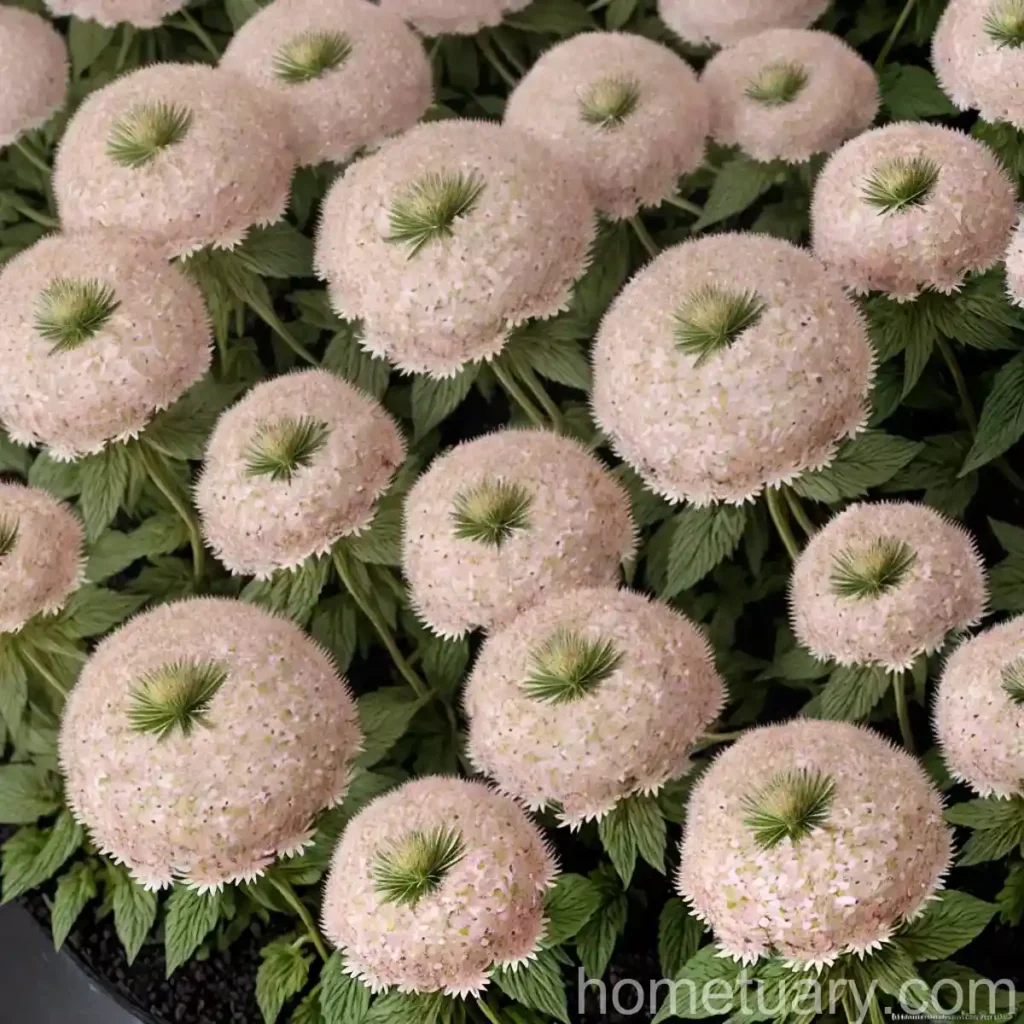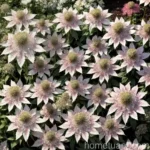What is the greater masterwort (Astrantia ‘Magnum Blush’)?
Astrantia ‘Magnum Blush’ is a captivating and elegant perennial plant known for its delicate, star-shaped flowers in a stunning shade of blush pink. This exquisite plant is a member of the Apiaceae family and is commonly referred to as the greater masterwort. The botanical name “Astrantia” is derived from the Greek word “Aster,” meaning star, which perfectly describes the distinct and captivating flower structure of this plant.
Astrantia ‘Magnum Blush’ is a charming addition to any garden, with its ornate blooms, attractive foliage, and versatile nature. In this comprehensive guide, we will explore the culture, uses, care requirements, propagation, and much more, providing valuable insights for both seasoned and aspiring gardeners.
Key Takeaways – greater masterwort (Astrantia ‘Magnum Blush’)
Before delving into the specifics of the greater masterwort (Astrantia ‘Magnum Blush’), let’s take a quick look at the key takeaways related to this remarkable plant:
- Plant Name: Astrantia ‘Magnum Blush’ (Greater Masterwort)
- Botanical Family: Apiaceae
- Flower Color: Blush Pink
- Plant Type: Perennial
- Notable Features: Star-shaped blooms, attractive foliage, versatility
- Uses: Garden landscaping, cut flower arrangements, pollinator attraction
- Cultural Preferences: Partial shade, moist, well-drained soil
- Propagation: Division, seed sowing
- Common Pests: Aphids, spider mites
- Common Diseases: Powdery mildew, leaf spot
Now, let’s embark on a journey to discover the enchanting world of the greater masterwort and unravel the intricacies of its care, propagation, and more.
Culture
Water
Astrantia ‘Magnum Blush’ thrives in soil that is consistently moist but not waterlogged. Adequate watering is essential, especially during the plant’s active growth periods and particularly during dry spells. It is crucial to maintain a balanced approach to watering, ensuring that the soil remains moderately moist without becoming excessively soggy, which can lead to root rot and other moisture-related issues.
Sunlight
In terms of sunlight requirements, Astrantia ‘Magnum Blush’ prefers partial shade to full shade. While it can tolerate some morning sun, especially in cooler climates, it generally performs best in locations with dappled sunlight or partial shade. In hot summer regions, providing the plant with protection from intense midday sun is beneficial for its overall health and vigor.
Fertilizer
Astrantia ‘Magnum Blush’ benefits from periodic fertilization to support steady growth and abundant flowering. A balanced, slow-release fertilizer can be applied in early spring as new growth emerges. It is important to follow the manufacturer’s recommendations regarding application rates and timing to prevent over-fertilization, which can negatively impact the plant’s health.
Soil
The greater masterwort thrives in humus-rich, well-drained soil with a slightly acidic to neutral pH. Amending the soil with organic matter such as compost or well-rotted manure can enhance its fertility and structure, providing an optimal growing medium for Astrantia ‘Magnum Blush’ to flourish.
Pruning
Pruning plays a vital role in maintaining the health, appearance, and longevity of Astrantia ‘Magnum Blush.’ Deadheading spent flowers not only promotes continuous blooming but also prevents the plant from self-seeding prolifically. Additionally, removing any yellowing or damaged foliage can enhance the plant’s overall aesthetics and reduce the risk of disease. Pruning should be carried out with sterilized tools to prevent the spread of potential infections.
Propagation
Division
Propagating Astrantia ‘Magnum Blush’ through division is a reliable method to create new plants and rejuvenate existing ones. This can be done in early spring or early autumn by carefully dividing the plant’s clumps into smaller sections, each containing healthy roots and shoots. These divisions can then be replanted in suitable locations, where they can establish and flourish.
Seed Sowing
Growing Astrantia ‘Magnum Blush’ from seeds can be an engaging and rewarding process. Sow the seeds in a well-prepared seed-starting mix in early spring, maintaining consistent moisture and moderate warmth to encourage germination. Once the seedlings have developed into sturdy plants, they can be transplanted into their permanent growing positions.
Container Popularity
Astrantia ‘Magnum Blush’ is well-suited for container cultivation, making it an excellent choice for gardeners with limited space or those seeking to add a touch of elegance to patios, balconies, and other outdoor areas. When grown in containers, this enchanting plant can be showcased individually or combined with other complementary flowers and foliage to create captivating displays.
Container Common Diseases
In container gardening, certain diseases can affect Astrantia ‘Magnum Blush,’ primarily due to factors such as overwatering, poor air circulation, and inadequate drainage. Common container diseases that may impact the plant’s health include:
- Root Rot: Caused by overly soggy soil or poor drainage
- Powdery Mildew: Fungal disease favored by humid conditions and stagnant air
- Leaf Spot: Fungal infection promoted by excess moisture on foliage
Preventative measures such as using well-draining soil, providing adequate air circulation, and monitoring moisture levels can help mitigate the risk of these diseases in container-grown Astrantia ‘Magnum Blush’ plants.
Common Pests
Aphids
Aphids are tiny, sap-sucking insects that can infest Astrantia ‘Magnum Blush,’ particularly during periods of new growth. These pests can cause deformities in plant tissues and the transmission of viral diseases. To control aphid populations, physical removal, insecticidal soaps, or horticultural oils can be used with care to safeguard beneficial insects and pollinators.
Spider Mites
Spider mites are common pests that thrive in hot, dry conditions, often infesting plants cultivated in arid climates or indoor environments. These minuscule arachnids feed on plant sap, causing stippling and webbing on the foliage. Mitigating spider mite infestations involves employing techniques such as increased humidity, targeted spraying with water, or the use of natural predators.
Botanist’s Tips
- Mulching: Applying a layer of organic mulch around Astrantia ‘Magnum Blush’ can conserve soil moisture, regulate temperature, and suppress weed growth, benefiting the plant’s overall health and vigor.
- Companion Planting: Pairing Astrantia ‘Magnum Blush’ with shade-loving companions such as hostas, ferns, and Pulmonaria can create visually appealing and harmonious plantings that complement each other’s attributes.
- Wildlife Attraction: The intricate flowers of Astrantia ‘Magnum Blush’ have a subtle allure that attracts pollinators, making it a valuable addition to wildlife-friendly gardens and habitats.
Fun Facts
- Astrantia ‘Magnum Blush’ is cherished for its association with enchantment and magic in folklore and traditional herbalism.
- The name “masterwort” is derived from the plant’s historical use in herbal remedies and as a symbol of protection in medieval traditions.
As we conclude our exploration of Astrantia ‘Magnum Blush,’ it is evident that this captivating perennial plant holds a special place in the hearts of gardeners and nature enthusiasts alike. Its ethereal beauty, versatile nature, and cultural significance make it a cherished addition to gardens, landscapes, and floral arrangements.
For further information and inspiration, the following external resources provide valuable insights and guidance on cultivating, appreciating, and utilizing the enchanting greater masterwort:
- Royal Horticultural Society – Astrantia
- The American Horticultural Society – Growing Astrantia
- Botanical Gardens Conservation International – Astrantia Species Diversity
- University of Maryland Extension – Perennials for Shade
Incorporating Astrantia ‘Magnum Blush’ into your garden or landscape not only adds a touch of allure but also celebrates the enduring beauty and versatility of this extraordinary plant.
With its enchanting blooms and enduring charm, Astrantia ‘Magnum Blush’ continues to captivate and inspire, enriching gardens and hearts with its timeless elegance and ethereal presence.















